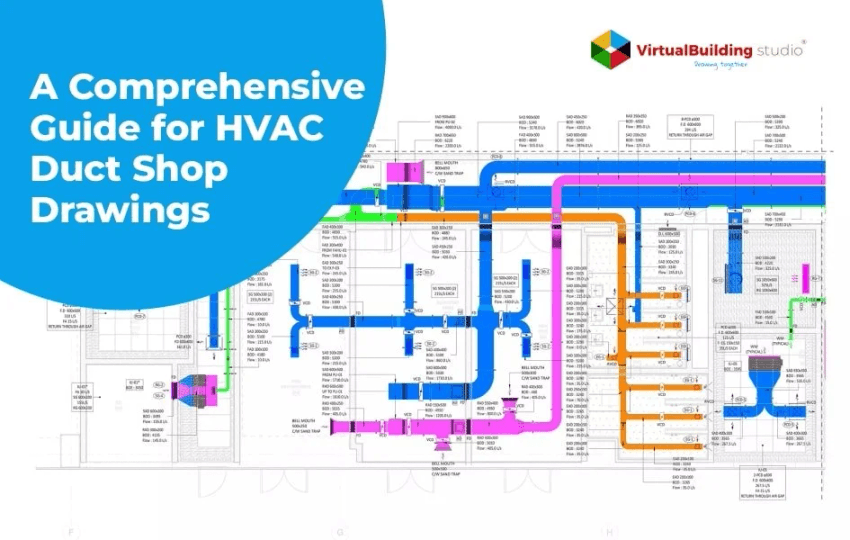
A Heating, Ventilation, and Air Conditioning system, or HVAC system as commonly addressed, is a multiple-system combination used for the air circulation between indoor and outdoor areas. Several technicians and engineers now refer to an HVAC floor plan and discuss it with the project architect to ensure the efficient working of all systems. The HVAC Duct shop drawings are the blueprints that have drastically transformed the landscape of heating, ventilation, and air conditioning systems.
What are HVAC Duct Shop Drawings?
HVAC shop drawings are detailed technical drawings providing an extensive depiction of HVAC systems within a building. The drawings provide information on how the duct has to be routed, and the location of duct accessories like duct fire dampers, VAV boxes, Volume control dampers, and others.
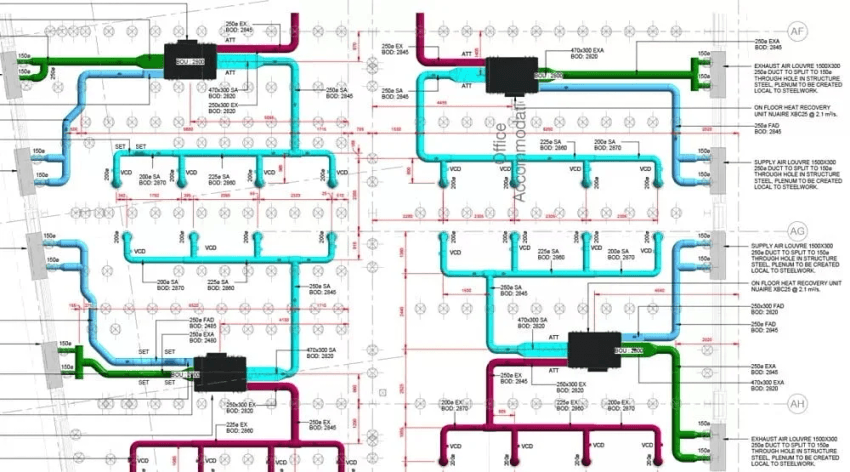
These blueprints are developed meticulously to guide the contractors, installers, and fabricators about HVAC installation in a project with utmost efficiency and accuracy. Engineers prepare these drawings for contractors and their teams to provide an exact idea about the construction work.
Services Included in HVAC Duct Shop Drawings
- HVAC Shop Drawings Services
- HVAC Duct Design
- Duct Sections and Levels
- HVAC Duct Fabrication Drawing
- HVAC Duct Layout Drawing
- Details of Air Handling Unit
- HVAC Clash Detection & Resolution
- Mechanical Room BIM Modeling
- Fire Dampers, Grilles, Coils, and Fans Modeling
- Humidifiers and Dehumidifiers Modeling
- MEP Installation CAD Drawings
Benefits of HVAC Duct Shop Drawings
HVAC Duct shop drawings offer multiple benefits to the stakeholders and uplift the design and construction work quality. Here are a few of its benefits:
Streamlined Installations
HVAC Shop drawings provide a visual roadmap to the contractors and fabricators, enabling them to work with confidence and surety
They are aware of the exact locations of each element and the preferable interconnecting methods. The availability of drawings allows for a seamless and streamlined installation process.
Coordination and Collaboration
HVAC Shop drawings facilitate a smooth collaboration between different trades involved in a project. These drawings ensure seamless integration with other systems like electrical, plumbing, and mechanical.
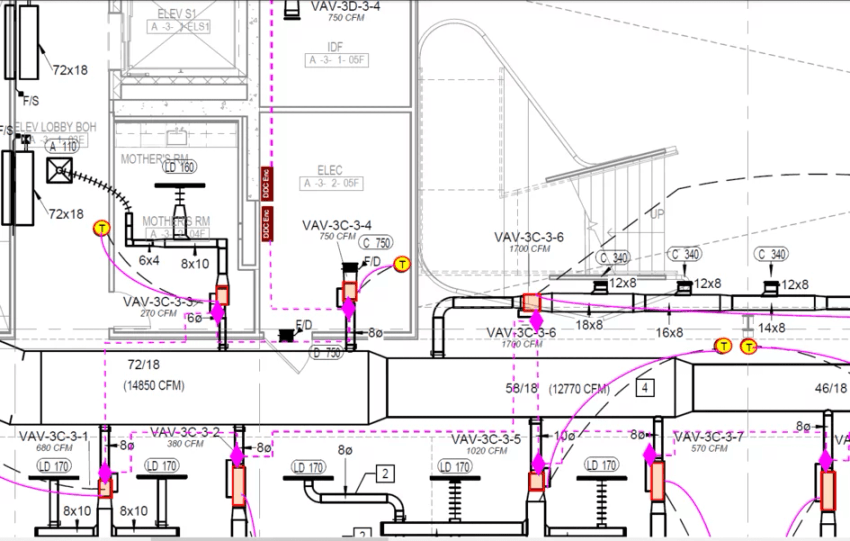
The uninterrupted integration allows for a conflict-free construction, avoiding any clashes or defects.
Enhanced Accuracy
The scope of making choices based on probability or guesswork is eliminated with HVAC duct shop drawings. These drawings enlist precise dimensions, duct layouts, equipment specifications, pipe routing, and electrical connections.
The detailed and precise specifications ensure that every element fits flawlessly where it belongs and devise accurate onsite execution.
Cost and Time Savings
The accuracy and precision induced with HVAC drawings eliminate the need to redesign or rework. The projects progress seamlessly on-site within budget constraints and required timelines.
The fabricators can efficiently generate HVAC components using the shop drawings, eliminating material wastage and costly errors.
Key Steps of Generating HVAC Duct Shop Drawings
HVAC duct shop drawings play an essential role in the successful implementation of its systems. The drawings formulate a roadmap for the fabrication, installation, and coordination of ductwork within a building. The key steps for generating HVAC Duct shop drawings from inception to execution are:
Understanding Project Requirements
For HVAC duct shop drawings, it’s important to collect relevant information about every aspect of the project. The necessary information includes architectural drawings, structure drawings, mechanical specifications, equipment details, and any specific design considerations.
Design Team Collaboration
For drawing accuracy and precision, it is crucial to develop effective collaboration between the design team. Intense discussions between the team members to understand the spatial constraints, design intent, and requirements are significant to generate comprehensive drawings.

Proper coordination should be established with architects, mechanical engineers, and other stakeholders to ensure a better project understanding.
Accurate Layout and Measurement
Accuracy of measurements and layout is paramount for creating precise HVAC Duct shop drawings. The accurate building dimensions of the existing systems and the entire building can be documented with laser measuring devices and digital tools. These devices also capture any obstruction or hindrances that might impact the ductwork layout.
Conceptualizing Ductwork Layout
With project requirements and design specifications detailed, the ductwork layout can be conceptualized. Factors such as pressure drops, airflow requirements, accessibility, zoning, and equipment locations should be considered while conceptualizing the layout. The appropriate duct sizes, routing, and placement can be determined using industry standards and guidelines.
Developing Detailed Shop Drawings
After finalizing the layout of the HVAC duct, the next step is to develop detailed shop drawings. The 2D and 3D representations of the ductwork are generated using CAD software.
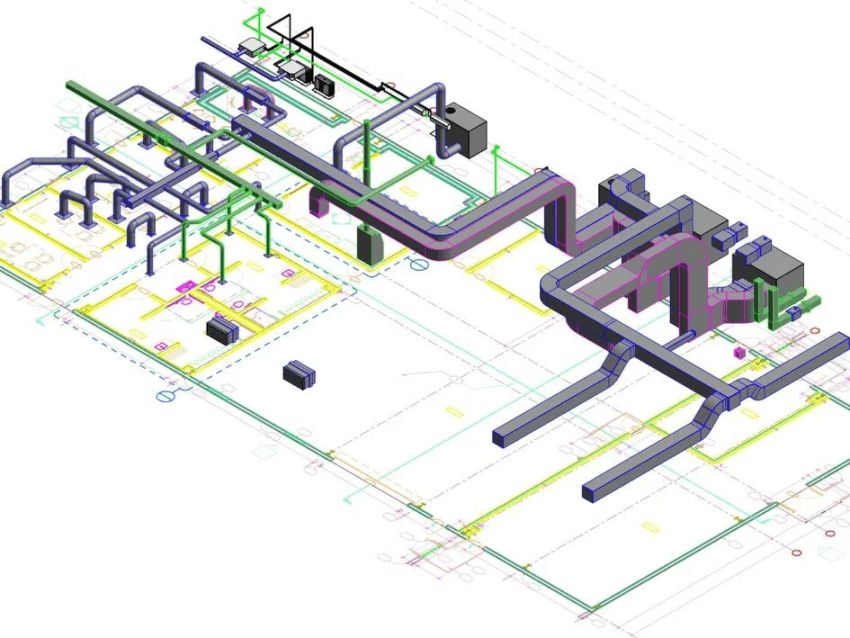
These drawings should include dimensions, duct sizes, insulation requirements, fitting details, and any important annotations. All the components should be properly labeled and numbered for easy identification during installation.
Coordinating with other Stakeholders
To ensure seamless integration of ductwork within the building and avoid clashes, effective coordination with other trades is significant.
The HVAC duct shop drawings should be shared and reviewed with structural, electrical, mechanical, and plumbing teams to identify any conflicts and rectify the situation by making required adjustments. Coordinated drawings encapsulating all necessary information can be developed by collaborating with all stakeholders.
Compliance with Codes and Standards
HVAC shop drawings should adhere to the local building codes, regulatory requirements, and industry standards. The drawings should include fire protection measures, accessibility considerations, and clearance guidelines.
The code consultants or third-party reviewers can be consulted, if necessary, to ensure adherence to codes and standards with their expertise.
Reviewing and Approvals
Before proceeding with installation, drawings should be thoroughly reviewed for accuracy, compliance, and completeness. The suggestions and approvals from the design team, project managers, and other stakeholders can help in identifying any potential issues, if any. To expedite the approval process, the inputs should be addressed promptly.
Fabrication and Installation Support
The fabrication team functions further according to approved HVAC shop drawings. Assist the team with clear and detailed instructions as per the drawings.
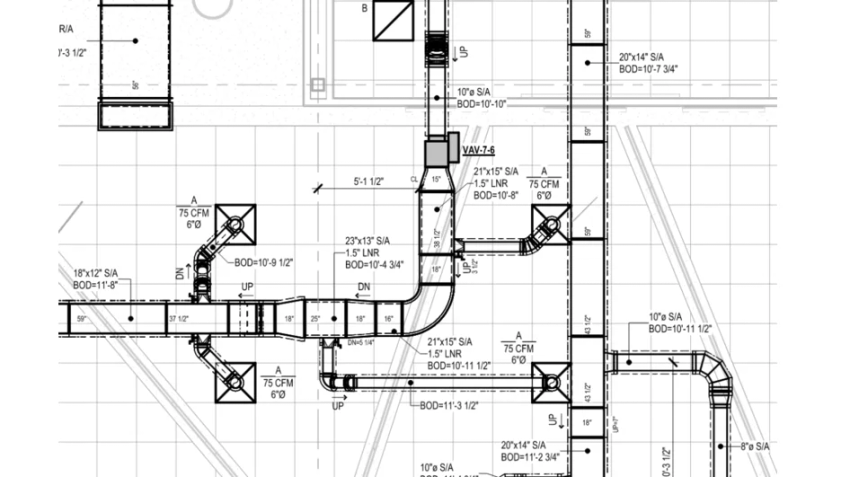
Timely addressing any query during the fabrication process can catalyze the fabrication process. Providing on-site support for the accurate implementation of the ductwork during the installation phase is a crucial measure to avoid issues and rework.
As-built Drawings and Documentation
A comprehensive documentation of final HVAC Duct Shop drawings along with revisions and approvals should be maintained by the Design team.
Any changes made during the time of construction should be updated in the drawings as the project progresses. The final as-built drawings should be documented upon project completion to have a record of the final installed ductwork.
Conclusion
HVAC Duct Shop drawings paint a world with every duct, pipe, and other components seamlessly integrating, leading to optimized performance and flawless installation.
The success of HVAC projects depends on the accuracy and precision of HVAC shop drawings. These drawings should be curated with expertise meeting the project’s unique requirements.



